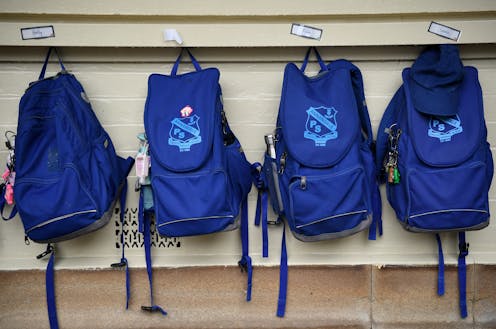If Australia wants to improve school outcomes, we need to define what 'equity' really means
- Written by The Conversation

Last week, the Productivity Commission released a major report on how to improve Australia’s school and university sectors. “Education is ripe for disruption”, deputy chair Alex Robson said.
The commission suggests longer schooldays, online classes taught by qualified teachers, and streaming students into ability groups to improve Australia’s educational performance.
But while these ideas may work well for some students, they won’t necessarily work for all.
If Australia is serious about improving its education system, we need to look at improving the whole system, for all students. This means we need a clear definition of what equity means for schools.
Why we need to focus on equity
About three years ago, all state and territory governments made a commitment to promote “excellence” and “equity” in Australian education in the Alice Springs (Mparntwe) Declaration. This sets out a “vision for a world class education system” and is supposed to guide education policy-making and related education reforms in states, territories, and the whole country.
The “excellence” component is easy to understand. It normally refers to the quality of measured student learning outcomes in school. But “equity” remains poorly defined and inadequately included and monitored in current education policies.
Educational equity is often described using terms such as fairness, inclusion, social justice, non-discrimination, and equal opportunity. These are worthy principles but do not provide a guide for what equity means in practice, how it should be monitored, and how progress should be measured.
Without a commonly shared definition of educational equity it is impossible to make progress. It allows governments to scapegoat schools for widening achievement gaps and growing learning inequalities, while nobody else is held accountable for improving equity.
The next national school reform agreement
Australian states and territories are about to begin negotiations for the next national school reform agreement, which sets out how to lift student outcomes and improve education systems performance from 2024.
As part of this process, the Productivity Commission’s review of the existing agreement was published in September.
This interim report (the final report is due in December) correctly states equity is one of four major policy challenges facing Australia’s school system. But when trying to explain what equity means, it does not clearly address what equity targets would look like and how they would be monitored.
The interim report claims equity is already defined in the 2008 Melbourne Declaration on Education and its successor, the Mparntwe Declaration. But there is no clear, useful definition written in any of these declarations. Instead, the report says equity “can be thought of as recognising that some students may have different educational needs and desired outcomes”. These are hardly insightful or practical guides to education policy, let alone school improvement.
Without a definition, the next agreement will not be able to make Australian school education more equitable.
How should we define equity
Our submission to the Productivity Commissions’s school agreement inquiry proposes a clear definition of educational equity.
We argue equity has two dimensions: individual and social. That is, equity should involve a minimum level educational attainment for all students, and similar education outcomes for different social groups.
An individual dimension of equity in education means that all children receive an education that enables them to fully participate in adult society in a way of their choosing.
Today in Australia and other OECD countries, this requires that all children should complete Year 12 or its equivalent amount of education (for example TAFE). We are far from that goal. The Year 7/8 to Year 12 full-time apparent retention rates in 2021 were 83% for all students, and 59% for Aboriginal and Torres Strait Islander students. The existing schools agreement says 96% of students should complete year 12 by 2031.
A social dimension of equity in education means students from different social groups achieve similar average outcomes, and a similar distribution range of these outcomes.
Read more: What does equity in schools look like? And how is it tied to growing teacher shortages?
The benchmark for educational equity is the achievement and attainment of the most successful social group of students. The OECD’s PISA (international student assessment) results, our own NAPLAN data, and Year 12 examination results show this benchmark is students from high socio-economic status (SES) families.
For example, the PISA 2018 results showed 15-year-old Australian students from the highest SES quartile were nearly three years ahead of students from the lowest SES quartile in reading, and four years ahead of Aboriginal and Torres Strait Islander students. An analysis published last weekend by former principal and author Chris Bonnor found 60% of the highest achieving students in Year 12 in NSW’s HSC exams are concentrated in the most advantaged schools.
Equitable education would set up the expectation Indigenous, socio-economically disadvantaged, rural and remote students achieve similar education outcomes to affluent students. There is no reason to consider, for example, that some groups of students are innately less intelligent than their peers from well-off privileged families.
Why we need equity
Equity in education is fundamental to an egalitarian, democratic nation.
Inability to define equity in education clearly will ensure we will continue to make little or no progress in keeping the promise of equitable education for every child.
So, defining equity well is the first step towards achieving it. The existing inequities in education are also a measure of the potential to increase productivity and economic prosperity. Investing in reducing inequity promises a way to overcome the current shortage of workforce skills and prepare the nation for uncertainty.







